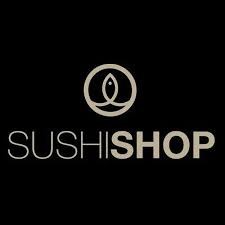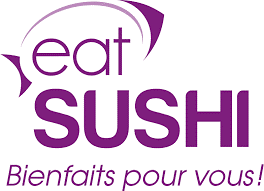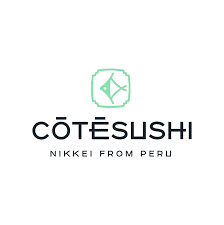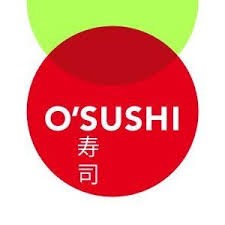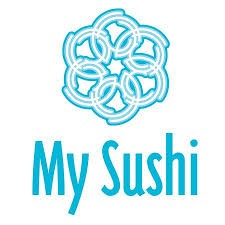Summary
The sushi market in France, Europe's largest sushi consumer, has experienced dynamic growth, driven by a diverse consumer base in search of exotic flavors and healthy food options. Although the market showed signs of saturation and faced challenges such as rising fish prices, sushi remained a popular choice. While sales of traditional sushi restaurants fell slightly in 2022, to 728 million euros, the delivery and supermarket sectors resisted, helped by over 1,000 Sushi Daily kiosks and initiatives such as Côté Sushis ' Maison Poké brand to adapt to changing consumer tastes.
Faced with cost challenges, with the average cost of sushi ranging from 21 euros per person in restaurants to more modest prices in supermarket kiosks, chains have adopted franchise models to expand. However, external factors such as the COVID-19 pandemic and subsequent containment strategies have led to a nuanced shift in consumer purchasing habits towards home consumption and the rise of delivery options. Despite these trends, the average price of sushi and maki purchases fell by 4.21% overall, suggesting a competitive market under price pressure.
French taste for sushi: market analysis
The sushi market in France reflects a strong consumer appetite for this traditional Japanese delicacy, marking its place as Europe's leading consumer. The popularity of sushi is reflected in staggering sales figures, despite tangible increases in fish prices and signs of market saturation. It's clear that the French craze for sushi is more than just a passing trend, with almost 50 million slices eaten in a single year. The dynamics of the sushi market are fuelled by a mix of traditional dining experiences and innovative concepts from supermarket kiosks and delivery services.
Some 1,500 Japanese restaurants across the country, plus more than 1,200 outlets, including fast-growing supermarket kiosks, sum up the sushi story in France. Its impressive penetration rate has risen from around 6% to 15%. Moreover, the market's progress is marked by the diversity of the French population's sushi consumption habits. While maki, nigiri and sashimi remain the most popular forms, demand for creative variants such as California rolls, tataki and chirashi bowls is also remarkable.
Supermarkets and hypermarkets, which already boast over 940 sushi kiosks, remain key players, with sales in excess of 28 million euros, reflecting the growing demand for home-cooked sushi.
Chains and franchised restaurants have adopted the operating models favored by franchising, revealing a strategic field of profit margins and royalty systems. In this competitive landscape, established players such as Côté Sushi, Planet Sushi and Sushi Shop are asserting themselves fiercely, as are newcomers from the grocery sector, such as the LDC group, who are entering the sushi business.
Against this backdrop of growth, the sector is not immune to the economic pressures of inflation, leading to an expected drop in sushi consumption of 5-7%. More expensive than most fast-food alternatives, sushi continues to reign supreme in delivery applications, with the average cost per person between 20 and 30 euros, significantly higher than fast-food staples such as burgers and pizzas. Comments on price trends indicate that the average price of sushi has fluctuated, with prices usually higher in restaurants than in supermarkets.
This consumption pattern reflects a willingness to indulge more extravagantly in restaurants.
The sushi market in France is enriched by a series of key players, each contributing to the diversity and accessibility of this much-loved Japanese cuisine. These companies, which range from restaurant chains to food kiosk operators, have been instrumental in expanding the sushi footprint across France, catering to the appetites of aficionados and casual diners alike.
Restaurant chains
- Sushi Shop: With a significant presence, Sushi Shop is one of the leading players on the French sushi scene. By focusing on contemporary and innovative sushi offerings, it has firmly established itself in the market thanks to its blend of traditional and modern flavors.
- Planet Sushi: Known for its inventive approach to sushi, Planet Sushi has experienced financial difficulties but remains a recognized name in the Japanese fast-food segment in France. Its survival and agile business model underline the competitive nature of the sushi industry.
- Côté Sushi : A unique chain that has embraced the fusion of Japanese and Peruvian cuisines, Côté Sushi has expanded its footprint by exploring the vibrant field of Nikkei cuisine, attracting those seeking a fresh culinary experience.
Supermarket Kiosks and Sushi Corners
- Sushi Daily: A pioneer of the sushi kiosk concept, Sushi Daily has extended its presence to many locations, bringing the experience of freshly prepared sushi to supermarket customers. By collaborating with major retail players, it has made sushi more accessible to the everyday consumer.
- Sushi Gourmet: Another key player, Sushi Gourmet represents a European sushi initiative under the banner of the Hana group. It competes closely with Sushi Daily, offering sushi lovers a range of choices when shopping.
- LDC Group : The LDC Group's entry into the sushi market through Asia General Food and the Sushi Master brand marks the entry of traditional food industry giants into the niche world of sushi. Their presence illustrates the lucrative nature of sushi in the wider food market.
Independent and niche restaurants
- Matsuri: Operating in the high-end segment, Matsuri offers sushi to discerning consumers who are prepared to pay a little more for an exclusive, high-quality culinary experience.
- Wasabi: Wasabi not only offers sushi, but has diversified its offering to include more attractive dishes, such as poke bowls under the Pokawa brand, demonstrating its ability to adapt to changing consumer tastes.
Each of these entities has carved out its own special place in the restaurant world
to understand this market
Detailed content
 Inforamtion
Inforamtion
- Number of pages : 30 pages
- Format : Digital and PDF versions
- Last update : 27/11/2023
 Summary and extracts
Summary and extracts
1 Market overview
1.1 Presentation and definition of the sushi market in France
Sushi is a Japanese dish based on vinegared rice ( shari) and another ingredient ( neta), usually raw fish. Sushi is often accompanied by other ingredients (ginger, wasabi, sweet or savory soy sauce).
There are several types of sushi:
- maki - roll-shaped sushi wrapped in seaweed;
- temaki - similar to maki, but in the shape of a cone;
- nigiri - a slice of raw fish served on an oval-shaped rice ball.
Sushi is mainly served in restaurants, but as the dish gains in popularity around the world, it is increasingly distributed in supermarkets and hypermarkets (GMS), thanks to the introduction of kiosks and corners, as well as delivery.
The global market is booming. Estimated at $7.56 billion in 2022, sales are expected to grow at a CAGR of 8% until 2030. Asian gastronomy has become increasingly popular worldwide since the early 2000s, and the sector is being driven by rising living standards, particularly in developing countries. Consumers' growing interest in the quality of their food and its impact on their health has led to an increase in the number of high-end restaurants and restaurant chains.
The French market is one of the most mature in Europe. Sushi is one of the most popular fish dishes, and while the market has shown very strong growth rates, it seems to be showing some signs of saturation , with many catering and delivery chains having to slow down their activity.the market is also having to cope withrising prices for the fish used in sushi (tuna, salmon, shrimp, etc.), which have been on the increase in recent years as production has not kept pace with demand.
However, supermarket distribution, concentrated around a few players, seems to be doing rather well, with increasing penetration rates.
1.2 A dynamic global market
The global sushi market is complicated to estimate, because while most sushi is sold by restaurants and specialist chains, a significant proportion is also sold in supermarkets and hypermarkets. Figures for the global sushi restaurant market are readily available, and are shown in the graph below. The market was worth *.** billion ...
1.3 The French market, European leader
In ****, according to food industry consultancy Gira, the French consumed ** million slices of sushi, despite an increase in the price of fish. This trend, which began around ** years ago, shows no signs of slowing, making France the biggest sushi consumer in Europe [***].
The Top ** sushi networks in France alone totalled *,*** points ...
1.4 The impact of the Covid-19 crisis
The restaurant sector has suffered greatly from the **** confinements in the fight against Covid-**. The sushi market is no exception. Nonetheless, sushi has carved out a significant share of meal delivery orders, providing some - albeit only partial - relief for this market. During the March **** confinement, sushi was among the ...
1.5 Home delivery and the new dark kitchen concept
The"ghost kitchens" market, more commonly known as"dark kitchens" or "ghost kitchens", concerns kitchens that sell food delivered to the home via online applications such as Uber Eats, Deliveroo and others. unlike traditional restaurants, it is therefore impossible to order and eat your meal on site. The brands of this ...
2 Demand analysis
2.1 A very popular dish in France
Sushi is a particularly popular dish in France. In fact, France is Europe's biggest consumer of sushi (***). During the lock-in, sushi ranked fifteenth in the list of dishes most missed by the French, according to an IFOP poll.
Would you say you miss sushi during confinement? France, ****, in Source: ****
Indeed, **% of ...
2.2 France's favourite types of sushi
There are many different types of sushi, and it's difficult to assess the breakdown of sales for each type of product. However, the graph below shows the appreciation of the French for each product.
(***)
Types of sushi preferred by the French France, ****, in Source: ****
Makis - roll-shaped sushi wrapped in ...
2.3 Focus on sushi consumption in supermarkets and hypermarkets (GMS)
evolution of sushi consumption in supermarkets
Physical points of sale are facing the emergence of "corner shops", or sales kiosks. The precursor of this consumption model and the current leader, Sushi Daily, has reached over *** points of sale in France alone, since its opening in ****[***].
Yet profitability isn't always there. Sushi ...
2.4 General information on the supply of fresh aquatic products to supermarkets and hypermarkets in France
Household purchases of fresh fish have fallen overall over the past fifteen years. French household purchases of fresh fish have fallen by around **% in volume over the last fifteen years. A more detailed analysis of purchases reveals that some products, such as pre-packed products , have escaped this decline , while certain sales ...
2.5 Customer profile of fast-food sushi chains
In order to identify the customer profile of fast-food sushi chains, we rely on an Opinionway survey carried out in March **** on the favorite brands of the French. Unfortunately, only two sushi brands are included in this survey: Sushi Shop and Planet Sushi, but this will enable us to identify the ...
3 Market structure
3.1 Distribution through supermarkets, chains and independent restaurateurs
The main distribution channels for sushi are Japanese restaurants, independent takeaways, sushi chains and supermarkets.the Top ** sushi networks in France alone totalled *,*** points of sale at the end of ****, including restaurants and supermarket kiosks[***].
the graph below shows that restaurants (***).
(***)
Places of purchase/consumption of sushi France, ****, in Source: ...
3.2 Growing franchise chains
For both sushi and fast food chains, the model par excellence is the franchise. As explained on the Toute la franchise website, the overall investment consists of an entry fee and the purchase of equipment, financed by a personal contribution and a loan. The restaurant then pays several types of royalty ...
3.3 The competitive landscape for sushi sales in supermarkets
By ****, there will be *** sushi kiosks in supermarkets in France[***]. This is also linked to the growing demand for sushi to be eaten at home. The following is a list of the main players in the supermarket sushi sector.
Sushy Daily
Sushi Daily, part of the KellyDeli group, was one of ...
3.4 Model for organizing the supply of fresh seafood to supermarkets
As explained above, sushi sold in supermarket kiosks is cooked on site, using raw fish, the classic sourcing model for which is described below.
Source: ****
4 Offer analysis
4.1 Price levels by distribution channel
The price of sushi varies according to the distribution channel, the type of sushi, and the additional ingredient (***). In addition, restaurants usually offer platters or formulas with an assortment of sushi, which again increases the price range at which sushi is sold.
The table below gives an order of magnitude of ...
4.2 Focus on nikkei kitchens, a new trend on the market
Nikkei cuisine is originally a blend of Japanese and Peruvian cuisine, but sometimes extends to the combination of Japanese and South American cuisines. Existing since the end of the **th century with the arrival of a large Japanese community in Peru, this type of cuisine became popular in the years **** to ...
4.3 Raw materials prices
The sushi market is highly dependent on fish and rice, the main ingredients used in sushi.the graphs below, showing the price of Scottish salmon and bluefin tuna, as well as the financial price of rice from November **** to November ****, highlight highly unstable markets.
Scottish salmon
After rising sharply during the ...
5 Regulations
5. Supervision of the restoration and sale of shushi
The sale of sushi must comply with regulations governing the sale of foodstuffs: in particular, Regulation (***) no. ***/****, which lays down hygiene rules for foodstuffs of animal origin[***].
To open a sushi restaurant, a number of conditions must be met:
Obtaining an operating license following training. Training lasts * days for new operators, ...
6 Positioning the players
6. Segmentation
- Sushi Shop Restauration
- Planet Sushi Groupe
- Eat Sushi
- Matsuri
- Côté Sushi (ETLB Franchiseur)
- Lady Sushi
- O’Sushi
- Sushi Plaza
- Hana Group
- Sushiman (Kimoco SAS)
- Sky Kitchens
- My Sushi
- Sushi B
- Miushi Bistro d’Asie
- Sushi Daily - KellyDeli
- Itsu Grocery France (Bertrand Groupe)
- Sushi Gourmet (Hana Group)
- Foodiz Solutions
- CORNER CUISINE DISTRIBUTION (WASABI ASIAN STREET FOOD)
- LDC
- Sushi Robots
 List of charts
List of charts
- Global sushi restaurant sales forecast
- Countries with the most Japanese restaurants
- Sales trends in the sushi sector
- Would you say you miss sushi during confinement?
- Top 10 catering specialties
All our studies are available online in PDF format
Take a look at an example of our research on another market!
Latest news
Companies quoted in this study
This study contains a complete overview of the companies in the market, with the latest figures and news for each company. :
 Choosing this study means :
Choosing this study means :
Access to more than 35 hours of work
Our studies are the result of over 35 hours of research and analysis. Using our studies allows you to devote more time and added value to your projects.
Benefit from 6 years' experience and over 1,500 industry reports already produced
Our expertise enables us to produce comprehensive studies in all sectors, including niche and emerging markets.
Our know-how and methodology enable us to produce reports that offer unique value for money.
Access to several thousand articles and paid-for data
Businesscoot has access to all the paid economic press as well as exclusive databases to carry out its market research (over 30,000 articles and private sources).
To enhance our research, our analysts also use web indicators (semrush, trends, etc.) to identify market trends and company strategies. (Consult our paying sources)
Guaranteed support after your purchase
A team dedicated to after-sales service, to guarantee you a high level of satisfaction. +44 238 097 0676
A digital format designed for our users
Not only do you have access to a PDF, but also to a digital version designed for our customers. This version gives you access to sources, data in Excel format and graphics. The content of the study can therefore be easily retrieved and adapted for your specific needs.
 Our offers :
Our offers :
the sushi market | France
Pack 5 études (-15%) France
- 5 études au prix de 75,6€HT par étude à choisir parmi nos 800 titres sur le catalogue France pendant 12 mois
- Conservez -15% sur les études supplémentaires achetées
- Choisissez le remboursement des crédits non consommés au terme des 12 mois (durée du pack)
Consultez les conditions du pack et de remboursement des crédits non consommés.





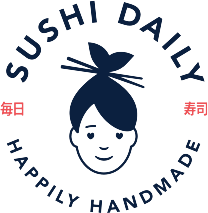 Sushi Daily goes Korean - 20/09/2023
Sushi Daily goes Korean - 20/09/2023
 The limitless appetite of Foodiz - 20/09/2023
The limitless appetite of Foodiz - 20/09/2023
 Planet Sushi fights for survival - 06/03/2023
Planet Sushi fights for survival - 06/03/2023
